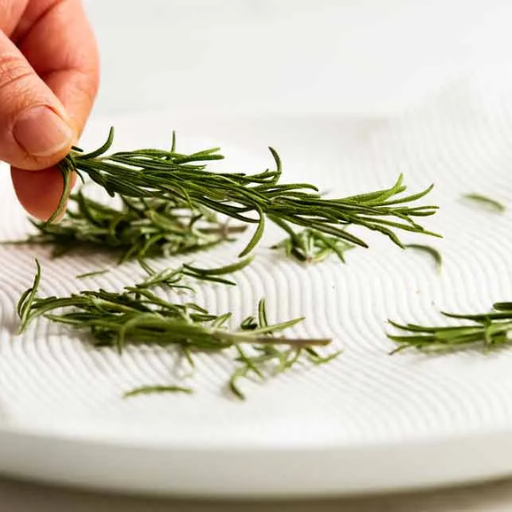Preserving the aromatic qualities and vibrant flavor of fresh rosemary by drying it is an excellent way of protecting the aromatic qualities and lively flavor of a versatile herb that would be enjoyed even when it’s not in season. This blog will show you how to dry rosemary using a microwave within the shortest time possible. We will take you through the step-by-step process and explore how to choose the best rosemary, the reasons behind drying herbs, and ways of storing them to retain their potency. Irrespective of whether you are a seasoned chef or just a home cook seeking to improve your cooking abilities, this article will give you enough information on how to dry rosemary successfully and enhance the taste experience throughout the year.
Why Choose to Dry Rosemary in the Microwave?
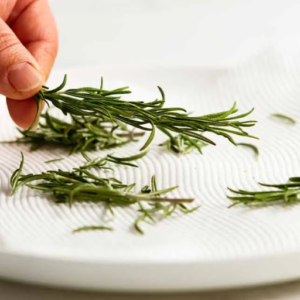
Image source: https://www.recipetineats.com/
Compared with other methods for drying rosemary, microwave drying has advantages. First and foremost, this method dramatically reduces the amount of time it takes to dry out the plant such that one can preserve his/her herb within few minutes instead of hours or days like traditional methods. The distinctive aroma and flavor associated with dried rosemary are maintained because the essential oils responsible for these characteristics are preserved by microwave heat treatment. Moreover, the energy-efficient method allows it to be done in tiny houses with limited resources and less time. This method does not require much effort. Lastly, drying rosemary in a microwave is easy and calls for little equipment; hence, beginners can do it in cooking.
Benefits of Using a Microwave to Dry Herbs
- Speed: The most significant advantage of a microwave in drying herbs is that it works very quickly. Alternatives to this are regular air drying. It may take several days before completely drying out rosemary and other spices, whereas microwaving them for just about a minute will dry them effectively. This haste method is beneficial when you want to conserve some herbs immediately.
- Taste and aroma conservation: Microwaving herbs retains their essential oils more efficiently than other drying methods. That’s because the process takes less time and occurs under controlled conditions. Hence, these plants’ vibrant flavors and aromas are held intact, resulting in more powerful dried forms with incredible flavor.
- Convenient and Accessible: Microwaving herbs requires less equipment and space. It is easy to use, even by beginner cooks or professional chefs. Furthermore, different herbs can be used conveniently without undergoing complicated preparation processes or waiting too long.
This method guarantees maximum ease for chefs who desire convenience and strong tastes in their dishes. It allows them to dry the foodstuff in microwaves.
Comparison with Other Drying Methods
Every drying method, such as air drying and oven drying, has advantages and disadvantages compared to microwave drying.
Air Drying is the traditional method of drying herbs naturally over a long time without requiring any special equipment. This method, however, is slow, and it takes several days to expose the herbs to environmental factors that can affect their taste and smell.
On the other hand, Oven Drying is quicker than air drying but may expose herbs to higher temperatures that may degrade their essential oils, leading to a loss of flavor. Moreover, ovens consume more electricity than microwaves, which makes them less suitable for small amounts.
In contrast, microwave drying is best known for being fast and conserving flavor. The microwave’s controlled atmosphere prevents excessive heating, maintaining vividness in the leaves. Also, it consumes less energy when quick drying is necessary, among other things on this list. Summing up, if you need to dry your herb quickly without destroying its essence, then consider using a microwave instead of traditional methods.
Is It Safe to Dry Fresh Herbs with a Microwave?
Drying fresh herbs in the microwave is generally considered safe if precautions are taken. According to multiple sources such as cooking books and food safety portals, the main thing is ensuring that herbs dry out fast so they do not lose their taste and nutritional value. In addition, it is best to put herbs between paper towels or on a microwave-safe plate in one layer and use low power (e.g., 30 seconds) in short bursts to avoid burning them. Besides, this method of drying herbs allows for preserving desired levels of dryness without overheating, which can spoil them. Following proper guidelines, microwave drying can be done safely and effectively, thus keeping the natural conditions of fresh herbs.
What Do You Need to Dry Fresh Rosemary in the Microwave?
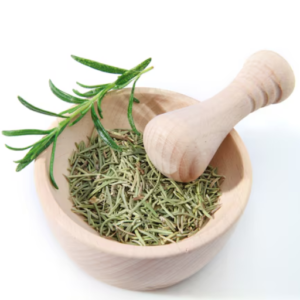
For microwaving dried rosemary, you will need:
- Fresh Rosemary: Check if the rosemary has been cleaned and no moisture left.
- Paper Towels: Once your dried rosemary has been placed among them, you can arrange them under it in a flat manner. They will continue absorbing the odor.
- Microwave-Safe Plate: A suitable plate to place paper towels alongside rosemary.
- Microwave: You need any typical kitchen oven with microwaves for this process to happen successfully.
- Scissors or Knife: They can be used when trimming excessive lengths of rosemary sprigs.
These are enough tools to ensure the effective drying of fresh rosemary while maintaining its taste and scent.
Essential Tools and Materials
Other than what was said earlier, here are some essential tools and materials:
- A cooking thermometer: This will help you check if the microwave’s temperature is ideal without overheating herbs.
- Glass jar or airtight container: This will be used to store dried rosemary after drying so that its flavor remains intact for a long time.
- Labels: These will be used to mark dried rosemary, especially if you are drying many other herbs. This is very important in ensuring organization within the storage area.
These tools aid fast and better drying with good results.
Preparing the Fresh Rosemary for Microwave Drying
To prepare fresh rosemary for microwave drying, harvest or select healthy sprigs. Rinse them carefully under cool running water to remove dirt or debris, then blot away excess moisture with a clean paper towel. Confirm that there is no moisture on the rosemary before placing it into the microwave because excess water can cause unevenness during drying. Next, remove any damaged or discolored leaves not to lose the quality of your dry herbs. If your rosemary sprigs are lengthy, use scissors or a knife to cut them down to manageable lengths, essentially between 4-6 inches. Take those trimmed sprigs and arrange them on a single paper towel, ensuring they have enough space in between for an even drying process. During this preparation, one should preserve aromatic oils and flavors present in rosemary through the entire drying procedure.
Step-by-Step Instructions to Dry Rosemary Using a Microwave
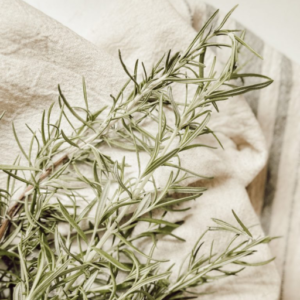
- Arrange the Sprigs: Place the raw rosemary springs in a single layer on a microwave-safe plate and cover them with a paper towel, ensuring they do not overlap.
- Cover with Paper Towel: Another paper towel is lightly placed over the herb to absorb any moisture during the drying process.
- Microwave Settings: Keep the oven at low or medium power to avoid overheating.
- Initial Duration: After 30 seconds of microwaving, check whether it is dry.
- Check for Dryness: If the rosemary is not completely dry, continue microwaving it in 15-second intervals until leaves become crunchy when touched.
- Cooling: Allow dried rosemary to cool before handling as it will be hot.
- Storage: Once cooled, put dried rosemary into an airtight container or glass jar that should be easily identifiable by writing on it.
Doing so ensures you achieve perfectly dried rosemary that retains its flavor and aroma when cooking.
How to Wash the Herbs Before Drying
Wash your herbs before drying to remove dirt, insects, and potential pesticides. Here is how:
- Rinse Under Cold Water: Gently put your herbs in a colander or sieve and rinse under cold running water so that all parts of their leaves and stems are reached
- Soak (if necessary): If some herbs are too dirty, fill a basin with cold water and immerse them entirely. Swirl them around to dislodge any soil or debris, then lift them out, allowing dirt to settle at the bottom.
- Shake Off Excess Water: Now shake off excess water gently from your colander without damaging the leaves
- Pat Dry or Air Dry: Dry the herbs with a clean towel or cloth. For optimal drying, spread briefly on a clean towel, leave for a few minutes until the air dries, and continue using your preferred method.
By properly washing your herbs throughout, only pure aromatic flavors can come out after the herb has been dried without any impurities being present.
Arranging the Rosemary Sprigs on the Paper Towel
When you have washed your rosemary, properly arrange the sprigs on the paper towel to dry. Here are the steps:
- Single Layer: On a clean and dry paper towel, lay out the rosemary sprigs in a single layer so they do not overlap; this would cause some of them to dry faster than others as the water gets trapped inside.
- Spacing: Make sure that there is some distance between each sprig. It helps speed the drying process by allowing enough air movement around every piece.
- Leave Room for Drying: Do not overcrowd the paper towel. If you are dealing with numerous sprigs, think about using different towels or drying them in batches so that all of them can be dried well.
This way of arranging the rosemary improves efficiency and equalizes drying thus maintaining flavor and smell.
Setting the Microwave for Optimal Drying Time
Microwaving Rosemary Effectively –First, set your microwave at a medium power level (about 50%) so it does not overheat when drying rosemary. Lay out the arranged rosemary sprigs onto a microwave-safe plate lined with a paper towel and cover with another paper towel to absorb moisture. Start microwaving the herbs for 30 seconds each time and check their dryness after every interval. The entire process may take approximately 1-3 minutes, depending upon the wattage of your microwave and how much herb you need to dry down. Ensure that they are crispy without burning; once dried, store when cool. This method preserves its strong taste while offering an efficient, fast means of drying herbs.
How Long Does It Take to Dry Fresh Rosemary?
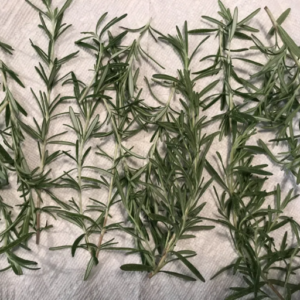
The period needed for fresh rosemary to be dried depends on the method used. If air drying is used, rosemary usually takes about one to two weeks to completely dry, depending on humidity and temperature. However, microwaving takes a short time, between 1 – 3 minutes. In whichever way you choose, the leaves should be crunchy enough to retain their flavor and smell.
Factors Affecting Drying Time
Many factors contribute to the drying duration of fresh rosemary. Initially, the humidity level in the surroundings is paramount; high moisture levels prevent drying, while low ones facilitate quick drying. During the drying process, temperature also matters; an optimum range of 70°F (21°C) to 100°F (38°C) enhances the loss of water content without destroying plant tissues. Besides that, time spent during dehydration will always vary depending on whether it is done by natural means such as air-drying or through mechanical devices such as microwaves and dehydrators. Still, microwaving is best followed by air-drying, taking days up to a few weeks. Lastly, freshness and size of the Rosemary sprigs themselves can affect its drying rate since young leaves with more incredible tenderness would dry first than old thicker ones.
Signs That Your Herbs Are Completely Dry
Ensuring that your herbs are dehydrated is imperative for optimal flavor and longevity. Below are some critical signs that you should look for:
- Crispiness: the leaves should feel dry and crumbly to the touch; they need more drying time if they bend or feel pliable.
- Aroma: when thoroughly dried, herbs give off a robust and concentrated scent, although weak and non-existent scents may indicate incomplete drying.
- Appearance: it can change color, usually getting brighter or less so; a consistent, crispy texture without moisture or discoloration is also necessary.
When you have these indicators checked, you can be sure that your herbs are ready to be stored so that they retain their desirable attributes in cooking.
How to Store Dried Rosemary?
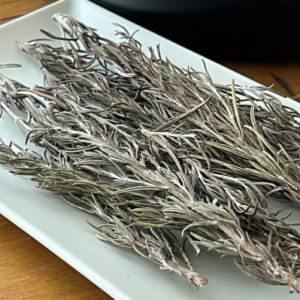
Proper storage of dried rosemary ensures that its potency and flavor remain intact. First, ensure the dried herbs are fully cold before storing them to avoid moisture buildup. Air-tight containers such as glass jars or vacuum-sealed bags should be used to prevent humidity and air exposure. These containers should be kept in cool, dark places away from direct sunlight and heat sources since, with time, light and heat destroy their quality. Label your containers with the date for reference, ideally using your dried rosemary within six months to one year for the best flavor.
Best Practices to Store Dried Herbs
If you want your dried herbs to last and maintain good quality, here are a few things you need to do:
- Hermetic Containers: Use glass containers that cannot be easily opened or plastic vessels that do not allow entry of air or moisture. You may also use vacuumed bags to ensure freshness.
- Cool and Dark Place: Keep the containers in cool, dry places like your pantry, away from heat or direct sunlight, as these diminish the taste and strength of herbs.
- Minimize Openings: Reduce the number of times you open it for storing purposes so humidity does not get to them. Consider using small amounts put in different jars.
- Check for Freshness Indicators: Always mark the date they were packed on each container to indicate when they were received. Dried ones are best consumed within six months to one year after drying for better results.
These practices can enhance your culinary dried herbs’ shelf life and quality.
Common Mistakes to Avoid When Storing Dried Rosemary
This article provides information on common errors made when storing dried rosemary, which ruins its taste and power:
- Use Non-Airtight Containers: When you keep rosemary in non-airtight containers, it will be exposed to air and moisture, degrading flavor or spoilage.
- Choose Warm or Bright Areas: Avoid keeping rosemary where there is too much light or inside hot rooms, as these actions speed up the breakdown of its essential oils, causing loss of fragrance and flavor.
- Forgetful About Expiry Dates: Sometimes, we forget to label our storage tins with expiry dates, and we end up consuming stale foodstuffs. Stale herbs must be replaced with fresher ones to get excellent cooking outcomes.
Thus, by avoiding such common mistakes, one can ensure that dried rosemary has a long life span and keeps its delicious aroma intact.
Frequently Asked Questions (FAQs)
Q: What is the best way to dry fresh rosemary using a microwave?
A: The best way to dry fresh rosemary using a microwave is to spread the herbs evenly on a microwave-safe plate and microwave them on high for 1-minute intervals until they are scorched and crumble easily.
Q: Can I use this method to dry herbs like thyme and oregano?
A: Yes, you can use the microwave to dry herbs like thyme and oregano as well. Just make sure to adjust the drying time depending on the delicacy and moisture content of the herbs.
Q: How long does it take to dry rosemary using a microwave?
A: Drying rosemary using a microwave typically takes 2-3 minutes. However, the total time can vary depending on your microwave’s power and the moisture content of the herbs.
Q: Is microwaving herbs the best way to dry fresh herbs?
A: While microwaving is a quick and efficient way to dry fresh herbs, air drying also works well for some herbs. Microwaving is especially useful for herbs that need to be dried quickly to retain their flavor.
Q: Should I rinse rosemary from the garden before drying it in the microwave?
A: It’s a good idea to rinse rosemary from the garden to remove any dirt or debris. Make sure to pat it dry with a paper towel before microwaving to ensure even drying.
Q: Will my herbs lose flavor when dried in the microwave?
A: Microwaving herbs to dry them quickly helps to preserve their flavor compared to slower drying methods. Properly dried herbs should retain a potent flavor when dried in the microwave.
Q: How should I store herbs after drying them in the microwave?
A: Store microwave-dried herbs in an airtight container in a cool, dark place. Proper storage helps retain their flavor and potency over time.
Q: Can delicate herbs be dried in the microwave?
A: Delicate herbs can be dried in the microwave, but you must carefully monitor them. These herbs tend to dry faster, so short intervals and frequent checks are necessary to avoid burning.
Q: Are there other effective ways to dry fresh herbs besides microwaves?
A: Other effective ways to dry fresh herbs include air drying and using a dehydrator. Each method has advantages, but microwaving is often the fastest and most convenient.













